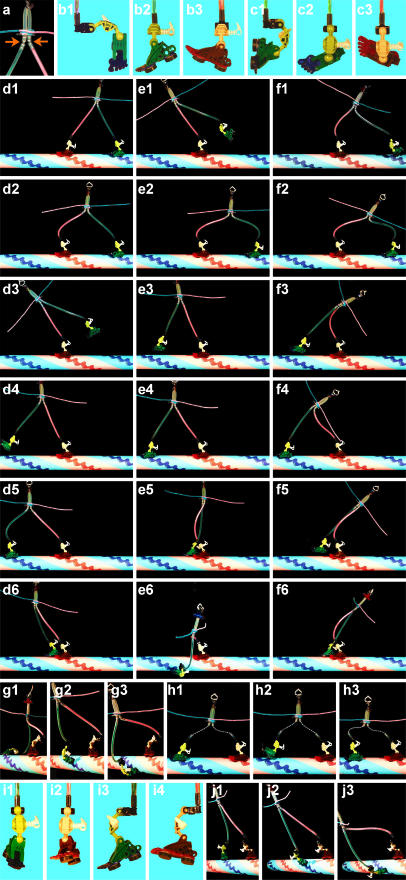FIGURE 3.
A toy model showing various walking postures. Note whether a leg is straight and strain free and whether a sole is parallel to the surface to allow rapid and stable landing. (a) Free joints likely reside near the leg (neck)-stalk junction in myosin V (Walker et al., 2000) and in other parts, too, in kinesin and myosin VI. (b) Toe down (green) and toe up (red) positions are assumed. (c) Various ankle structures are possible, such as this where the leg and sole are parallel, but toe up/down always means the toe being closer to (red)/farther from (green) the leg. (d) Walking forward with the lifted toe in the up position is difficult. (e) Walking is easy if the lifted toe is down. (f) With the lifted toe down, landing will be on a forward, rather than backward, site even in the presence of a backward force. (g) Straight toe up-down makes spiral landing difficult. (g1) On 17th subunit; (g2) on 11th; (g3) on 7th. (h) Even with flexible legs (many free joints), toe down in the lifted foot assures forward landing if landing requires full extension of the legs. (i) Ankles that work obliquely. (j) Oblique ankles make a spiral motor; compare the straight legs in j2 and the bent legs in g2.

